Protect What's Important With Fire-Resistant Metal - PODCAST TRANSCRIPTION
October 25, 2023 at 12:00 p.m.Editor's note: The following is the transcript of a live interview with Jeff Haddock, Shaun Page and Richard King from BlueScope. You can read the interview below or listen to the podcast.
Megan Ellsworth: ... hello, everyone. My name is Megan Ellsworth here at askaroofer.com.
Lauren White: And I'm Lauren White.
Megan Ellsworth: And this is the AskARoofer podcast. Welcome. We're super excited to be talking with BlueScope today, and their umbrella of companies, and we're going to get into that right now. Hi, Jeff, Shaun, Richard. How are you doing?
Richard King: Very well, thanks for having us.
Jeff Haddock: I'm good. How are you doing?
Megan Ellsworth: Yeah. Let's start out with Jeff. Why don't you just introduce yourself?
Jeff Haddock: Yeah, so my name's Jeff Haddock. I'm the technical services manager for a couple of the companies that actually operate within the BlueScope Steel umbrella, AEP Span and ASC Building Products, and I've been with the company for 21 years. Metal roofing and siding is my passion, and it's what I know, and I love doing it, and I'm hoping we can get your guests some good information today.
Megan Ellsworth: That's awesome. Shaun, how about you? Who are you?
Shaun Page: So I'm Shaun, I'm the communication specialist on the marketing team, part of the NS BlueScope Coated Products North America, which is consisting of ASC profiles, broken into three divisions, as Jeff just alluded to, as well as Steelscape. And I've been with the company about nine years now. And with that, I handle a lot of the digital marketing aspects, a lot of the questions coming in from homeowners that I see across social media, as well as some of the email marketing.
Megan Ellsworth: Awesome. Very cool. Richard?
Richard King: Hi. Yeah, I'm Richard. I'm the marketing manager, and I guess our job here is to... We want to see everyone with a metal roof, whether it be commercial or residential. So just trying to get as much great information out there as possible, and just excited to see more metal in our communities.
Megan Ellsworth: Yeah.
Lauren White: Definitely. Yes, very excited to talk more about metal. So when it comes to roofing, let alone metal roofing, there's so many terms out there. So can you walk us through what some of the different types of metal roofing are? I know there's corrugated, standing seam, et cetera, and I leave it all to you.
Richard King: So maybe I'll kick off with a layman's term, and then I'll hand it over to Jeff to go into some of the details, but to kind of dumb it down to the easiest detail, because I was once on this learning curve too, and as you said, there's a lot of terms, and some are relevant, some are not. But the two key forms for metal roofing, there's concealed fastener roofing, which means that the screws and fasteners are not exposed. And then conversely, there's one called exposed fastener roofing, and that includes things like corrugated panels, or your traditional agricultural panels. And for most residential applications, people will be using some form of concealed fasten panel, maybe called a standing seam roofing, and that'll give that kind of nice flat, with the clean line kind of rib panels that you'll see on a lot of modern homes and things out there. Jeff, there's my layman's description of that, what about some other thoughts from your end?
Jeff Haddock: No, you did an excellent job there, Richard. Yeah, it's exactly what it comes down to. So the way we kind of categorize it is exactly right, there's concealed fasten, and then exposed fasten. Concealed fastener, just that, so anything that has hidden fasteners, we don't have any visible fastening devices exposed on the roof. Exposed fastener, transverse, it means we've got exposed fastener heads sticking out all over the roof, and a lot of times, what that... Corrugated profiles fit into that, but corrugated is such a catch-all term, a lot of people think of corrugated as a wavy profile. In our industry, we think of corrugated being just an exposed fastener, which can take on many different shapes, not only a wavy profile. You can have trapezoidal ribs, you can have minor and major ribs, there is a slew of profiles that are out there for exposed fastener. But when you're dealing with the concealed fastener system, generally speaking, you're referring to a standing seam roof system, which is going to have flat pan, with physical vertical seams that protrude out from the roof line.
Megan Ellsworth: Wow, that's great. I don't think we've actually had a podcast where we kind of go through in layman's terms, like we're talking to someone that knows nothing about it, explain the different types of metal roofing. I'm learning a lot personally, so this is great. So you mentioned corrugated metal roofing, what are the different applications of corrugated metal roofing panels?
Jeff Haddock: How big is your imagination, really? I mean, roofing obviously, siding. We've had it used as fencing.
Megan Ellsworth: Okay.
Jeff Haddock: You can use it for aesthetic features or accent pieces. I've had it seen used on interior applications, or accent walls, backsplashes, really, you're just talking about a fixed panel system that you can really apply to anything that... Your imagination is really only your limit when it comes to those types of profiles.
Richard King: Yeah.
Jeff Haddock: And that would be the for standing seam, really, if you... Technically speaking, yes, it's designed for a roof application, but standing seam panels are really growing in popularity for wall applications, and who's to say you couldn't use a standing seam panel on an interior application as an accent wall? But very rare that you do see that, but really, it's really the limit of your imagination, is what these types of profiles can be used for.
Richard King: And we see a lot of, particularly the curved corrugated that we refer to, is that... The reason that that can be quite popular as compared to some other panel types, the curve shape of each of those ribs produces a softer shadow and a less kind of harsh accent line, so therefore, it gives you a bit more flexibility if you're using it in accent pieces, like Jeff alluded to, which can sometimes be inside a home, as well as outside, or if using the small things such as planner boxes. But that kind of shape means it's a bit easier to work with, and also is just a bit more versatile in terms of how the lines of that panel will match with other features of a home, or things like that. And selfishly, you can hear from my accent, I'm Australian, and corrugated roofing is actually the number one most popular roofing product there in terms of the design you see everywhere. So I just like to see it all around us 'cause I think it's just such a great product.
Megan Ellsworth: We love your accent.
Lauren White: And I wouldn't have thought planter boxes out of corrugated metal. I mean, the sky's the limit.
Richard King: One of our engineers here actually just made a rocking seat for his wife with a corrugated shade cover on it. So, as Jeff said-
Megan Ellsworth: Wow.
Richard King: We can use it for anything and everything.
Lauren White: Very cool.
Megan Ellsworth: Wow.
Lauren White: So as we continue talking about corrugated metal, how does it compare to other types of metal in the industry, or that you offer?
Richard King: I'll probably jump into it a little bit first from a layman's perspective, but I think what we see it for is for residential and light commercial applications for some different designs, and then for other things, it's also used in commercial applications, we've got it in a lot of multifamily applications in the Pacific Northwest. The flexibility of metal products is, it really doesn't come down to the panel design, but more how thick the metal is in terms of what applications it can be used for. And so what that means is that you've just got a huge amount of diversity. And so generally, the thicker the metal means the more it'll probably be used on the commercial end of things, and then the thinner the metal, the lower the price point, the more it'll be used for DIY projects, or residential things. And also, generally, if the metal's a bit thinner, it can be a bit easier to work with. So if you're approaching a product from a DIY perspective, a lighter gauge product, that's what... Gauge is what we refer to as the metal thickness, can be a bit easier to work with.
Jeff Haddock: Yeah, and I can extrapolate on that, and kind of touch on the DIY aspect of it. Dealing with an exposed fastener, or what we were referring to as a corrugator profile, they are much simpler to install than a standing seam roof system. So standing seam roof system is going to require a little bit more involved detail work, sheet metal workmanship, things to make the roof right. Corrugated panels don't have very complex details where you're worrying about thermal movement, expansion and contraction, points of fixity. There's just a myriad of things that you have to deal with, penetrations through the roof line.
Corrugated lends itself more to the DIY aspect of roofing, as opposed to a standing steam, where you would really want the expertise of a skilled contractor to be able to pull that off properly, unless obviously if you have some of that experience in there. The one big thing, drawback, with an exposed fastener panel is just that exposed fasten, which does, over time, require routine maintenance to make sure that the roof is going to perform as intended. Fasteners that are used to secure the roof can actually back out the washers, the self-sealing washers can wear out. This requires annual checks on it. It's not a set it and forget it style roof system, where you can just throw it up there, and you're expecting years, and years, and years of maintenance-free worry. No, that's not the case. The material itself will last a while, but it's the attachment points, it's the sealant that's used to seal up things. These other wear-good items that we like to reference, those are the things that you have a problem with.
Now, the one benefit with corrugated profiles is, like I said, if it's easy to install, it's easy to replace and fix. Whereas a standing seam system, it's going to be much more involved, much more invasive. But the benefit to the standing seam is, you don't have visible fastening, so you don't have to worry about the maintenance that you would on a traditional corrugated, or exposed fastener profile. Everything's concealed, everything's hidden or, as opposed to with a corrugated profile, everything's more in an exposed manner, subject to exposure to the elements, and weather, and a myriad of other things that... It's a little bit more labor-intensive per se, for a maintenance aspect on a corrugated style roof.
Megan Ellsworth: For sure. Just a follow-up question to that. So if a homeowner were to get a corrugated metal roof for their home, maybe they're in Australia, what should they be looking out for maintenance-wise to make sure that no screws are coming loose, or whatever? What are some things that they can do to keep ahead of that maintenance?
Jeff Haddock: Annual checks, that's our biggest. You want to get up there at least once a year, and just spot check. You're looking for backed out fasteners. We use closures to actually seal up the flutes underneath certain flashing transitions. You want to make sure those are all intact, and not allowing for wind-driven... We like to call it wind-driven particulate, but that basically means wind-driven rain, bugs, critters, anything that can get inside of the flutes of the panels, you want to make sure those are all sealed up. You want to make sure fasteners aren't backing out. The heads of the fasteners used to secure set panels, they come with an EPDM washer on them. A lot of times that rubber, EPDM rubber, on those washers can be worn out, or if you've got... When they were installed, maybe they over drove the fasteners, and it blew the ceiling portion of the washer out, meaning it exploded that rubber washer, thus eliminating the ceiling benefit of that washer for the fastener. So there's not a lot of maintenance involved with it, but there is some, and it's just checking that.
And one of the biggest, biggest things, and this doesn't really lend itself to the corrugated panels per se, that I see, gutters. Gutters are a huge deal. Now, not every roof is going to have a gutter, but I can't tell you the countless amount of projects I've grown out there and I've seen trees growing out of the gutter, or the gutters are filled with leaves, and whatever else out there. As soon as your gutter gets backed up, and doesn't have a chance to work as the gutter should properly should, that water's going to fill up, fill up, and then you're going to worry about water backtracking into the [inaudible 00:12:42] of the panels. And then you've created a roof leak, which really isn't the roofing panels leaking, it's because of lack of maintenance from the gutters. So these are things, build up of debris anywhere across the roof, and just... You want to double-check some things, at least annual. I'm always a biannual guy on myself, something like that, but that's how I-
Richard King: Yeah, as Jeff said, that annual visual check, which is pretty straightforward, is for so many purposes. For people in fire areas, you can... Particularly in where we are in Northern California, that build-up of pine needles and things like that can introduce a big risk. So doing that annual check, and making sure that everything's clear and free of debris, can not only be good for ensuring the longevity of your roof, but the safety of your home. And then also, things such as clearing organic matter on the surface can extend the life of the paint as well too. So it's just really important to do that, that really simple but important visual inspection.
Megan Ellsworth: Yeah, yeah.
Lauren White: And that's something that contractors can do, right? Homeowners can call a contractor to come, and say, "Hey, we need an inspection done on our roof."
Jeff Haddock: Yeah, if you're uncomfortable with heights, or getting up on your roof, roofing contractors, you can absolutely hire one to come up and provide an assessment of your roof. And there's actually some contractors that are out there that actually sell maintenance plans with their installations. So sourcing the type of contractor you're working with, and seeing if that's an option is within the realm of possibility, for sure.
Richard King: I was just going to say quickly, a lot of this stuff is not too complex. The things that Jeff talked about, a loose fastener will be visible, we've got guides on our website of what an overdriven or underdriven fastener looks like in terms of the washer underneath it, and then I think we could all know what a tree in our gutter growing looks like. So a lot of the basic stuff-
Lauren White: Yeah.
Richard King: It shouldn't be seen as a daunting process, and more is just kind of that, as you would with your car, of doing just a look over, make sure your tires don't look deflated, that it's not dripping oil in the driveway or something like that. It's just something relatively straightforward that you can do yourself. Or if you're not comfortable with heights or certain things, there's people out there to help as well too, like taking your car to the mechanic, I guess.
Lauren White: Right.
Megan Ellsworth: Yeah, yeah. That reminds me, I totally need to clean out my gutters before winter comes. That is so important. It's something you just don't think about.
Shaun Page: Leaf guard.
Jeff Haddock: Yeah.
Megan Ellsworth: Yeah, it's a good...
Lauren White: So we've touched on the other uses of corrugated metal a little bit, and we've mentioned garden boxes, but what have you seen other people use these products for besides roofing? Maybe you've seen some fun photos on social media, I'm not sure.
Jeff Haddock: I think this is a great question for Shaun. Shaun Fields a lot of these, and gets a lot of photos, and inquiries that are coming in, and different use mix, use questions. Shaun, what are your thoughts?
Shaun Page: Yeah, so there has been a couple unique ones that stand out to me. We had a homeowner take, actually, a corrugated sample of ours, and they bent it into kind of like a circle, put a bucket in the middle of it, and then dumped QUIKRETE in it and made their own concrete planter boxes, so the outside have-
Lauren White: Oh, [inaudible 00:16:08]
Shaun Page: That maybe corrugated sides to it. So that was a really unique one that I saw. And others have used that same method there to create the concrete post for putting up a backyard, like patio sun shade. They put a nice four-by-four in the middle of that, and then the outside is nice, so you're not having that concrete square block, but it has a little bit more of a pleasing aesthetic to it. And then there was another one that we saw that somebody did use it as an interior application, where they used it as wainscotting in one of their hallways. So that was kind of different, I mean, not really something I would've wanted through a hallway, 'cause it's metal, and it can kind of give that echo, but it was unique in terms of not every day do I see that.
But to our earlier points, I mean, yes, obviously it's always the roofing, or maybe a little add-on addition that they do to give a covered area in front of their front door, something along those lines. But it is interesting, some of the stuff that does come through our Instagram accounts, or our Facebook accounts, that we get to see those. And it's always nice when homeowners or end users share that stuff with us, 'cause, I mean, we find it interesting ourselves. I mean, maybe not for everyone, but definitely for us.
Richard King: Yeah, we're always seeing some pretty cool things too, when you think about a corrugated panel, is generally the lines go in the one direction, so we've seen really interesting wall applications, where people mix it up of having it both go one direction, and then another direction, or at an angle, and then you can get a really... So therefore, you start off with a really boring flat wall, and then with all that kind of texture and lines, you actually turn it into something really interesting. Or do the same approach, mix up the colors of the different panels, and therefore, you turn this boring, flat one colored surface into this multicolored, or really interesting engaging surface. A benefit of corrugated is just how versatile you can use it to really transform surfaces, particularly in siding.
Lauren White: Wow, that's so cool.
Megan Ellsworth: That is cool. I wouldn't have even really thought to use it in something artistic like that, like making a wall art situation. That's really cool. So I know you all have fire resistant metal roofing, why should homeowners use this product? I mean, besides the fact that metal's fire resistant, and especially in the Pacific Northwest and in Colorado where all the fires are, Australia, what's the draw that you see people using it?
Jeff Haddock: The biggest thing with obviously using metal, metal is non-combustible. I'm going to get into a little bit of boringness, which is the world I live in, and going into code compliances and things of that nature.
Lauren White: Love it.
Jeff Haddock: So good old metal, generally speaking, for metal roofing, or roofing to have a fire rating, you have to have a certain amount of testing done to that. One of those tests is through Underwriters Laboratories, which we call a UL 790 test. Basically what that is, it's a flame spread test to ensure that the panels aren't going to communicate fire readily to the structure. Now, the way the old code... And excuse me, let me backtrack, the way that's defined is, if a roofing is going to be either Class A, Class B or Class C. Class A being the highest rating of fire resistance that you can have.
Now, the way the old building code used to read was that as long as your roof was covered in metal, you automatically qualified for a Class A. Well, as time went on, they found out that while metal may not light on fire, it does get super hot, and those layers below the metal, they're susceptible to extreme levels of heat, i.e. plywood, things of that nature, which would then spontaneously combust the plywood, thus eliminating the fire resistant properties of the metal, because basically, you're transferring such an extreme amount of heat through that metal roof that you're lighting things underneath it on fire.
So the way that the code changed a few years back is that now they look into the entire assembly. And what I mean by assembly is the entire roof substrate, from the interior, all the way out to the exterior cladding, which would be the metal roof. And there are certain rules and parameters that code officials are looking for to make sure that you're going to qualify for a Class A rating. So the way we've tested it with metal just directly over plywood with an underlayment, that gets you a Class C rated roof.
But most code jurisdictions want Class A, or with the highest rating for fire resistivity. In order to get that, there's a few ways to go about it. I could bore you to death and this podcast, would probably last three hours, but for time-saving purposes, so basically you have two different substrates, you have combustible and non-combustible. Non-combustible substrates referring to anything... The substrate was maybe installed over a metal deck, or a steel frame. The actual substrate or the medium for attachment of the roof is not combustible itself. That automatically qualifies for a Class A rating.
Now, let's say you're going over a combustible substrate, which is going to be probably 90% of residential applications because you're going over plywood. Now, in order to protect that plywood, there have been layers, additional layers that must be applied over the plywood to protect that plywood from that heat transfer. And one way is to do that to achieve a Class A rating over plywood is to add a quarter inch layer of DensDeck, which is basically an exterior grade drywall, that would be applied over the top of the plywood. And this gives you an insulation layer that protects that plywood from any superimposed heat from an external fire that may have landed on that roof.
There's some other ways to go about it, there's actually some hybrid underlayments that are fire rated that you can directly apply over plywood, and then just metal itself, that will also qualify for a class A rating, because the underlayment itself is also fireproof. But in general, anything directly over plywood will not give you a Class A rating as far as fire resistivity. You really need to get into looking into other layers that might need to be swapped in there. And it can get very confusing, and I do highly encourage any of the listeners on here that if they do have questions about fire rating, please, please, please reach out to the manufacturer directly so that we can get you pointed in the right direction.
Megan Ellsworth: Yes, and also, anyone listening, you can also go to askaroofer.com, find the BlueScope directory, and we can point you in the direction of contact info for any questions that you have as well on that. 'Cause that's so important, especially 'cause Lauren and I both live in Oregon and Colorado, and it's smoky here right now, and it's just important, you want to protect your home.
Richard King: Yeah, I think that's a big takeaway, and what we try and educate our customers. Metal in of itself is a great material, and obviously for embers and stuff like that, it doesn't spread fire, but it must be important, people have to think about their whole structure and the whole home, that the layer of metal on the top is just one element of that total solution, as Jeff talked about. And that when you're thinking about fire resistance and fire prevention, it's that total solution, and doing everything in unison, which is the most important thing, as opposed to just selecting one material here, one material there, or in fact, forgetting your annual maintenance or something.
Lauren White: Definitely. Yeah. When I first got into roofing, I was like, "Wait, there are so many more pieces to this than just the top layer." So yes, understanding that, and asking questions to your contractor and manufacturer. So with that, what other questions besides what all is involved in a roofing system, what other questions should homeowners ask contractors or manufacturers when it comes to metal roofing, when they're considering getting a re-roof or a new roof installed?
Jeff Haddock: So something probably near and dear to my heart, and it's as important, if not more important, is installer qualification. That is the biggest thing that is overlooked. You're hiring a guy that says, "I'm Joe Roofer." Out there. It doesn't necessarily mean he's got experience, or he or she has experience in metal roof applications. So really vetting your installer, and checking their credentials, making sure they're licensed, making sure they have experience in handling and dealing installations that are similar to yours, or dealing with similar products, that they have that understanding.
And asking them for examples. Don't just take their word for it. You want to be able to, "Hey, do you have any examples of some projects you've installed?" Or, "What's your experience?" And that nature. Because I'm telling you, metal roofing is not a shingle roof, it does not install the same, though some of the details are a little bit, some of them might be used a little bit, but the way that all comes together is much, much, much different. So really, really, really boils down to vet your installer or contractor that you've hired for that, don't just throw all your eggs in one bucket, and say, "Oh, here we go." And you've got this really knockout solid product, but then they can get really botched really quick.
Richard King: And one thing that I would also add to that too, I totally agree with Jeff's point, contractor skill is probably the biggest differentiator between a good install and a bad install. The other thing is too, is sometimes a homeowner doesn't necessarily know the actual manufacturer of the product that's going on the roof, and it's worth asking that, because one thing with metal, is often inferior products, and really good products. When they're brand new, they'll all look the same, they'll all be a nice shiny red, or blue, or whatever you're putting on your roof, but it's actually how it degrades over time in terms of what happens to that top finish. Does the color fade? Those kind of things. How does it hold up to the elements? Which may change based on a high quality thing or a low quality thing.
So it's always worth checking that your contractor, or that it's being sourced from a reputable supplier. I'll give a quick, as like AEP Span are building products like us, but one that sources material, which is quality commitments, manufacturing commitments and all those things to ensure that that roof is going to last as long as what those expectations are.
Jeff Haddock: Product warranty. Product warranty.
Richard King: Yeah, and that you're actually getting a product warranty that a manufacturer will stand behind.
Lauren White: Yeah.
Megan Ellsworth: Yeah, and that you're reading the warranty, and you know, you're educated on it.
Richard King: Exactly.
Jeff Haddock: Absolutely.
Megan Ellsworth: Yeah. Well, thank you, gentlemen, so, so much for chatting with us today. I know I've learned a lot. Lauren, I feel like we've both learned a lot.
Lauren White: Absolutely. Yes.
Megan Ellsworth: This has been fabulous. Thank you so much. Is there anything else you want to add?
Jeff Haddock: No, I appreciate you all having us on here.
Richard King: Yeah. And then I would just encourage, you can access it through our profiles on RoofersCoffeeShop, but we have a ton of visualization resources on our website between a visualizer where you can use AI to skin corrugated, or other products onto a project photo, or look at our project gallery, many of which Jeff has taken photos of up on roofs, or with his drone. And often, that kind of visualization, and just getting an idea of what you're getting into can really help start the process, and spur those imaginative thoughts. We also offer samples as well too, and sometimes getting a color or a panel sample can really see how that particular product will look for your project.
Lauren White: Fabulous.
Megan Ellsworth: Fabulous. Yeah, I love playing with those visualizers. Those are so fun. And it's great when you are not sure what you want to go with. So everyone go over to rooferscoffeeshop.com and askaroofer.com, and check out their directory, and you can go to their website as well and play with those visualizers. Thank you so much, this has been a fabulous episode of the AskARoofer podcast, and we will be seeing you next time.




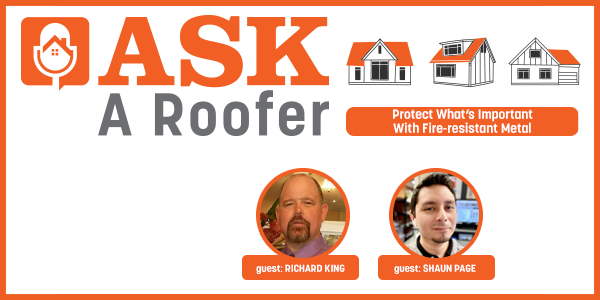
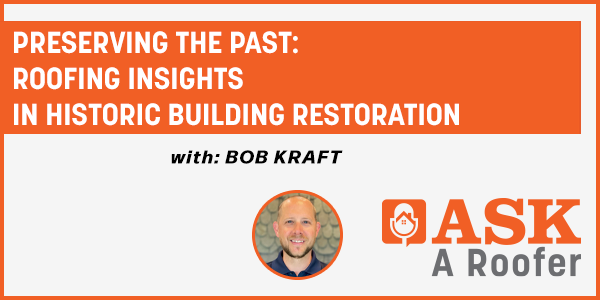

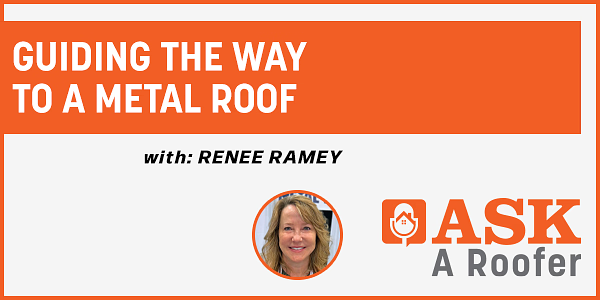

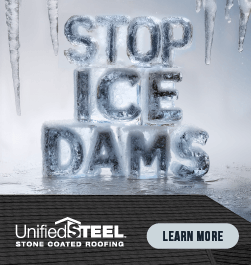
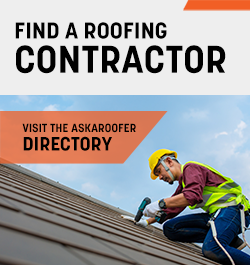



Comments
Leave a Reply
Have an account? Login to leave a comment!
Sign In